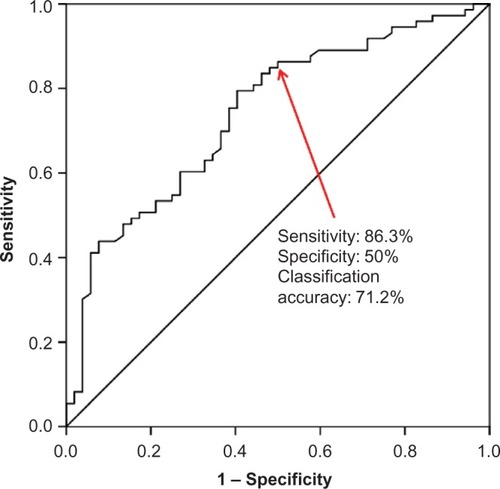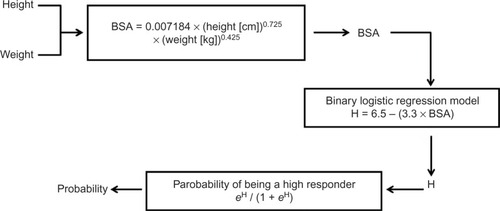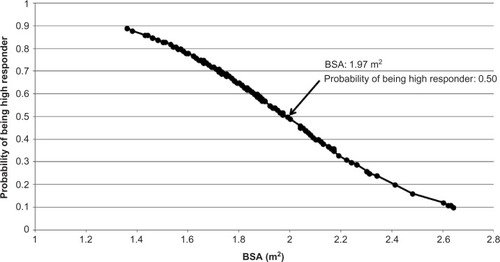Figures & data
Table 1 Patient and transfusion characteristics
Figure 1 ROC curve to identify the best cutoff probability value for Model 2.
Abbreviation: ROC, receiver operating characteristic.

Figure 2 Summary of sequential steps involved in predicting high vs low response.
Abbreviation: BSA, body surface area.

Table 2 Regression models to predict response level (high vs low) using variables with significant associations in univariate analysis

